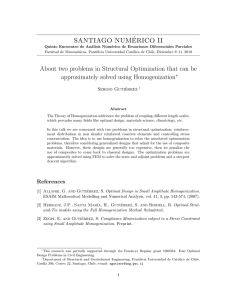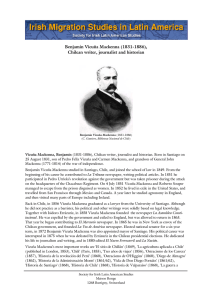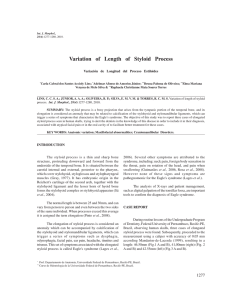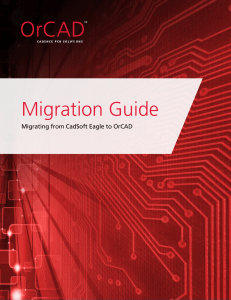Baryon effects on void statistics in the EAGLE simulation
Anuncio
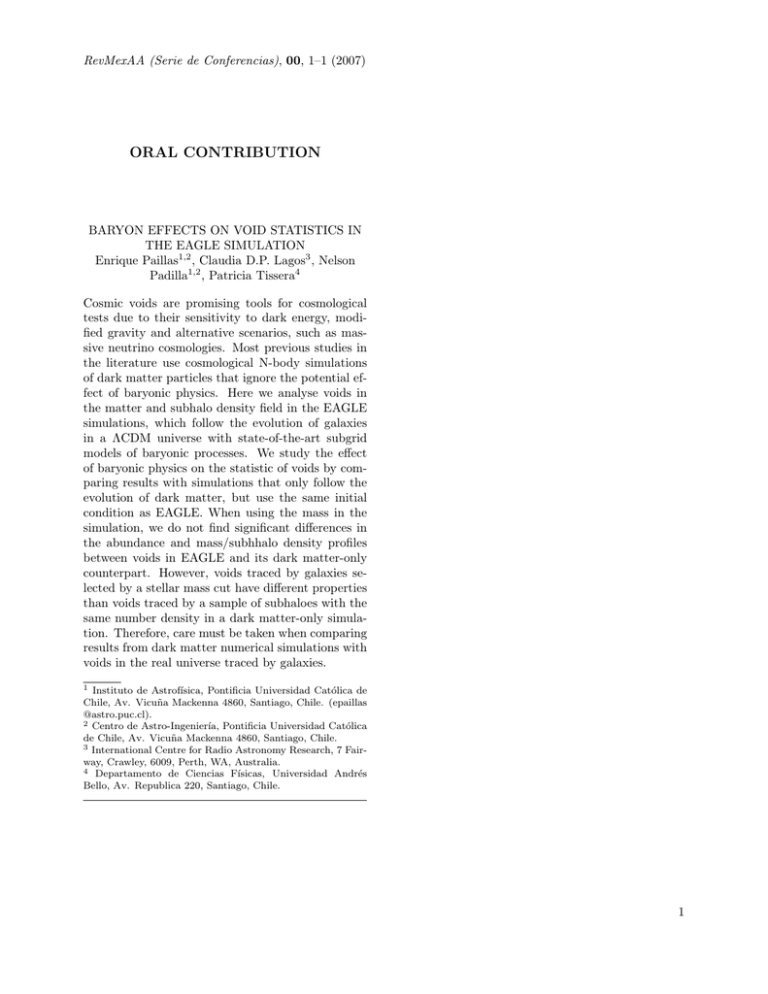
RevMexAA (Serie de Conferencias), 00, 1–1 (2007) ORAL CONTRIBUTION BARYON EFFECTS ON VOID STATISTICS IN THE EAGLE SIMULATION Enrique Paillas1,2 , Claudia D.P. Lagos3 , Nelson Padilla1,2 , Patricia Tissera4 Cosmic voids are promising tools for cosmological tests due to their sensitivity to dark energy, modified gravity and alternative scenarios, such as massive neutrino cosmologies. Most previous studies in the literature use cosmological N-body simulations of dark matter particles that ignore the potential effect of baryonic physics. Here we analyse voids in the matter and subhalo density field in the EAGLE simulations, which follow the evolution of galaxies in a ΛCDM universe with state-of-the-art subgrid models of baryonic processes. We study the effect of baryonic physics on the statistic of voids by comparing results with simulations that only follow the evolution of dark matter, but use the same initial condition as EAGLE. When using the mass in the simulation, we do not find significant differences in the abundance and mass/subhhalo density profiles between voids in EAGLE and its dark matter-only counterpart. However, voids traced by galaxies selected by a stellar mass cut have different properties than voids traced by a sample of subhaloes with the same number density in a dark matter-only simulation. Therefore, care must be taken when comparing results from dark matter numerical simulations with voids in the real universe traced by galaxies. 1 Instituto de Astrofı́sica, Pontificia Universidad Católica de Chile, Av. Vicuña Mackenna 4860, Santiago, Chile. (epaillas @astro.puc.cl). 2 Centro de Astro-Ingenierı́a, Pontificia Universidad Católica de Chile, Av. Vicuña Mackenna 4860, Santiago, Chile. 3 International Centre for Radio Astronomy Research, 7 Fairway, Crawley, 6009, Perth, WA, Australia. 4 Departamento de Ciencias Fı́sicas, Universidad Andrés Bello, Av. Republica 220, Santiago, Chile. 1
